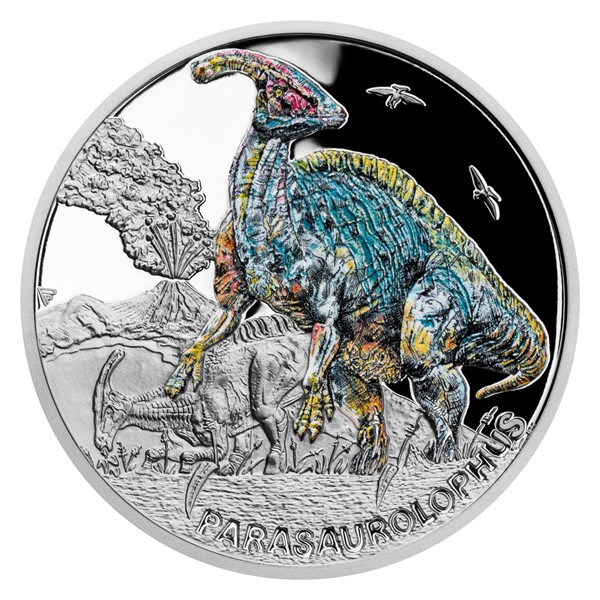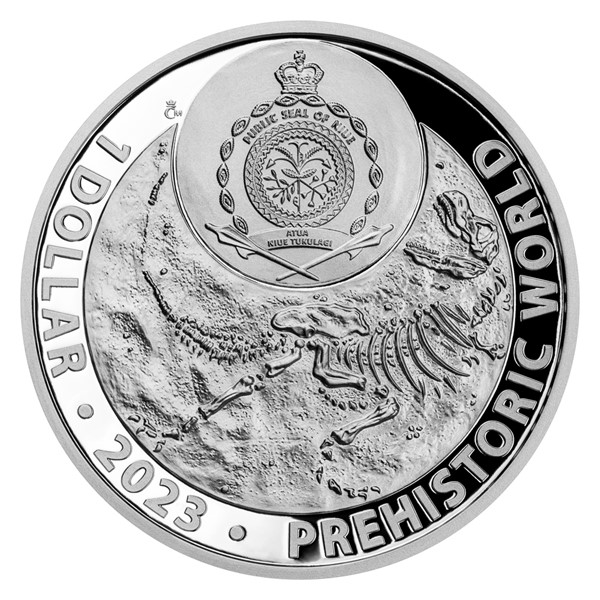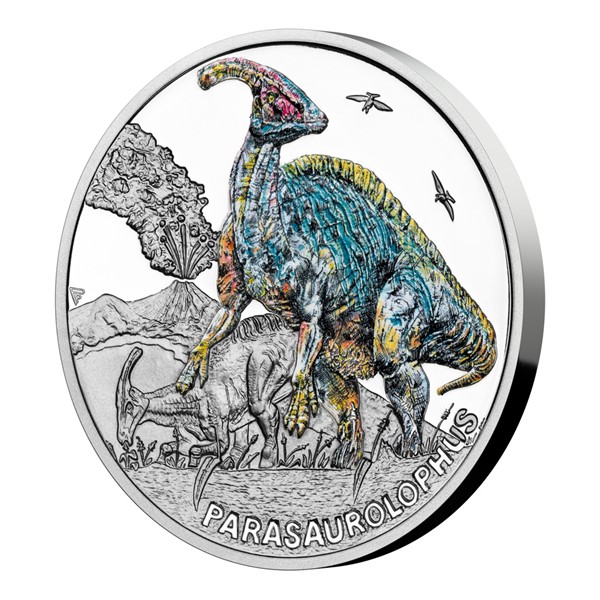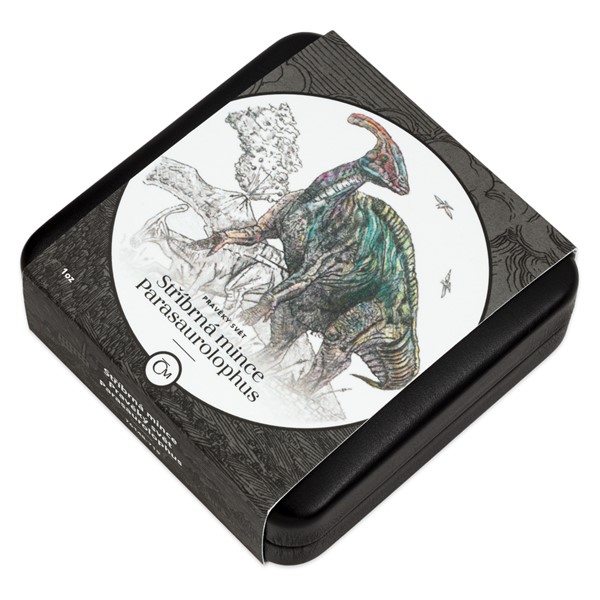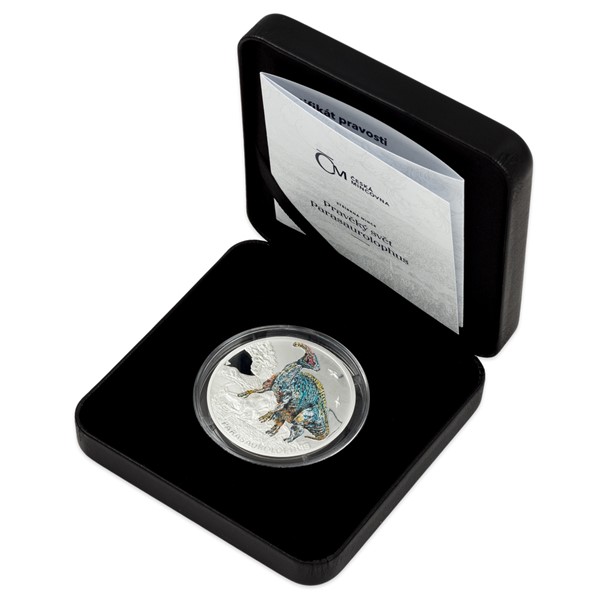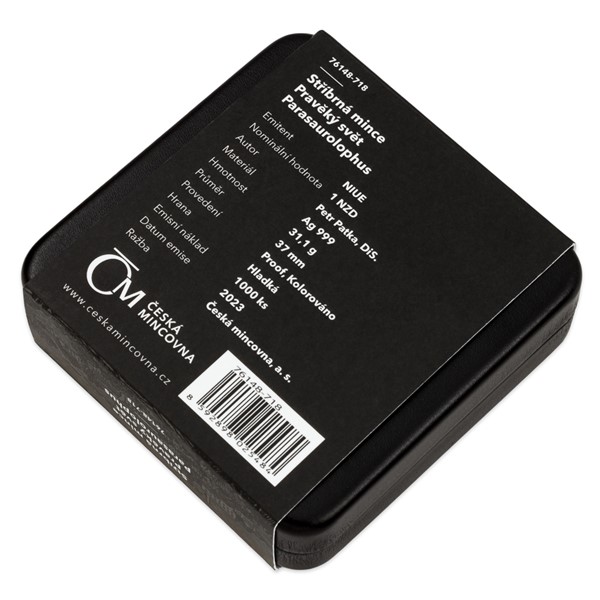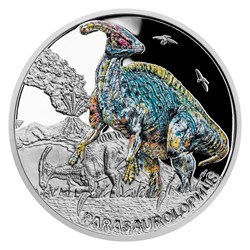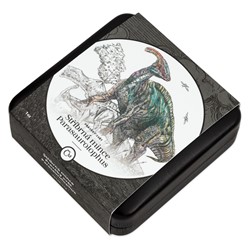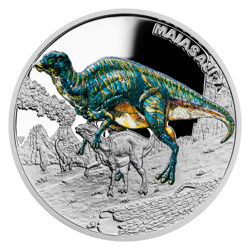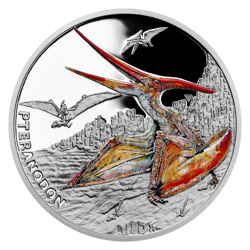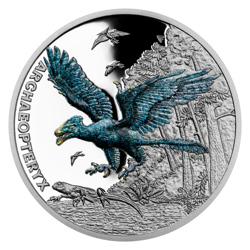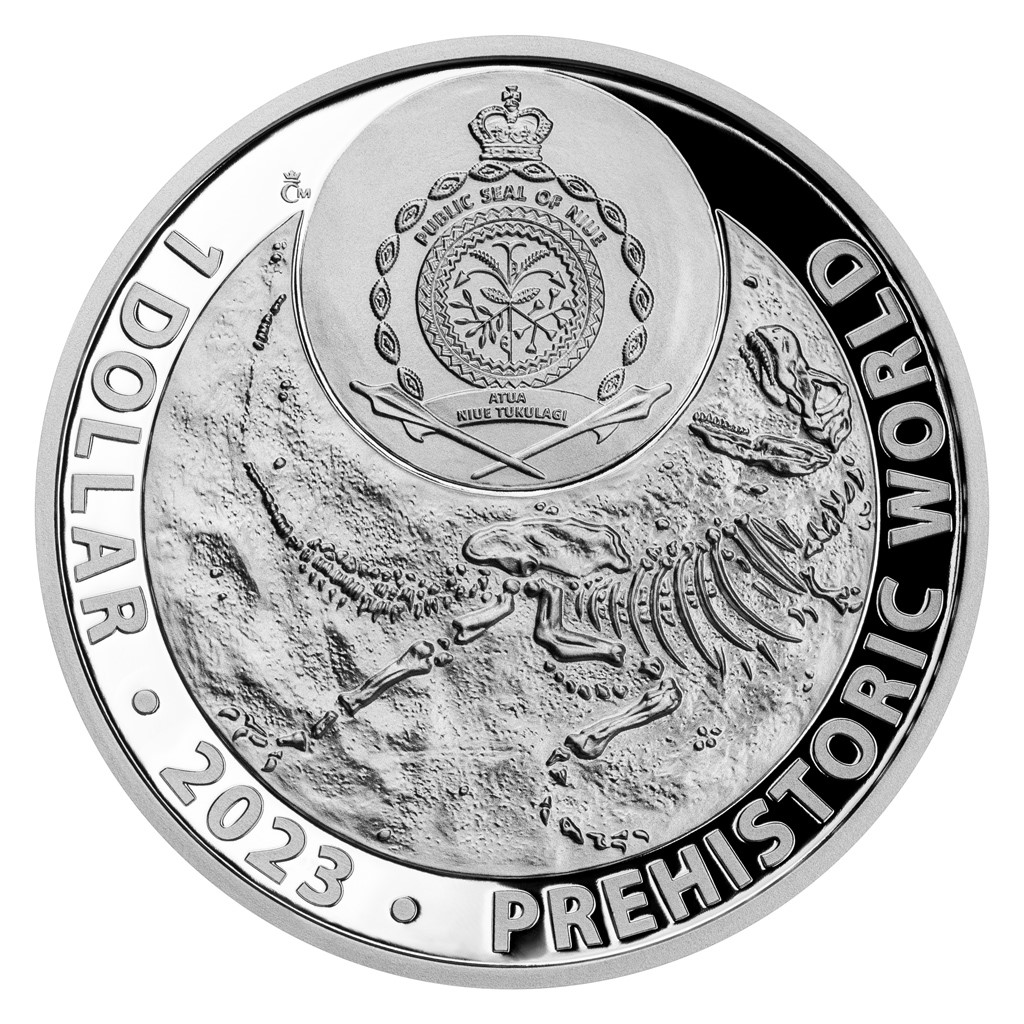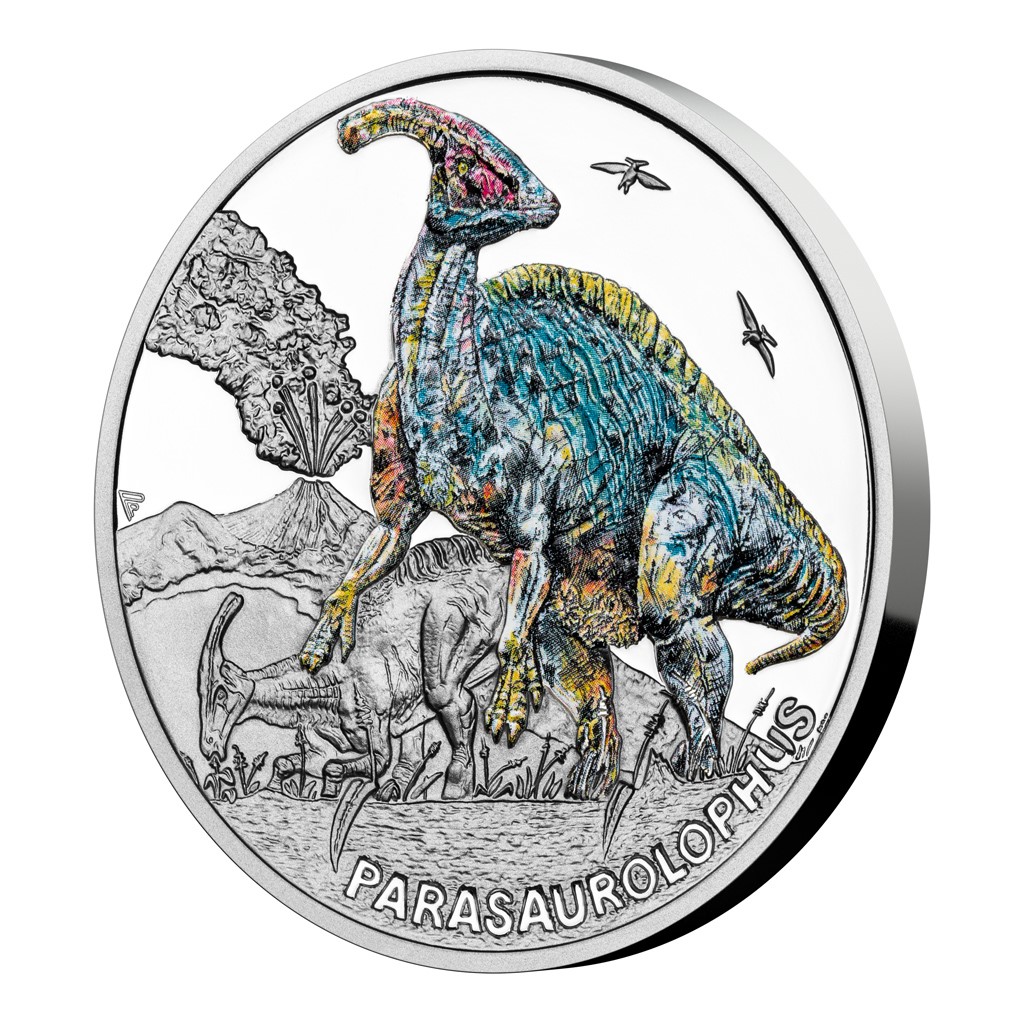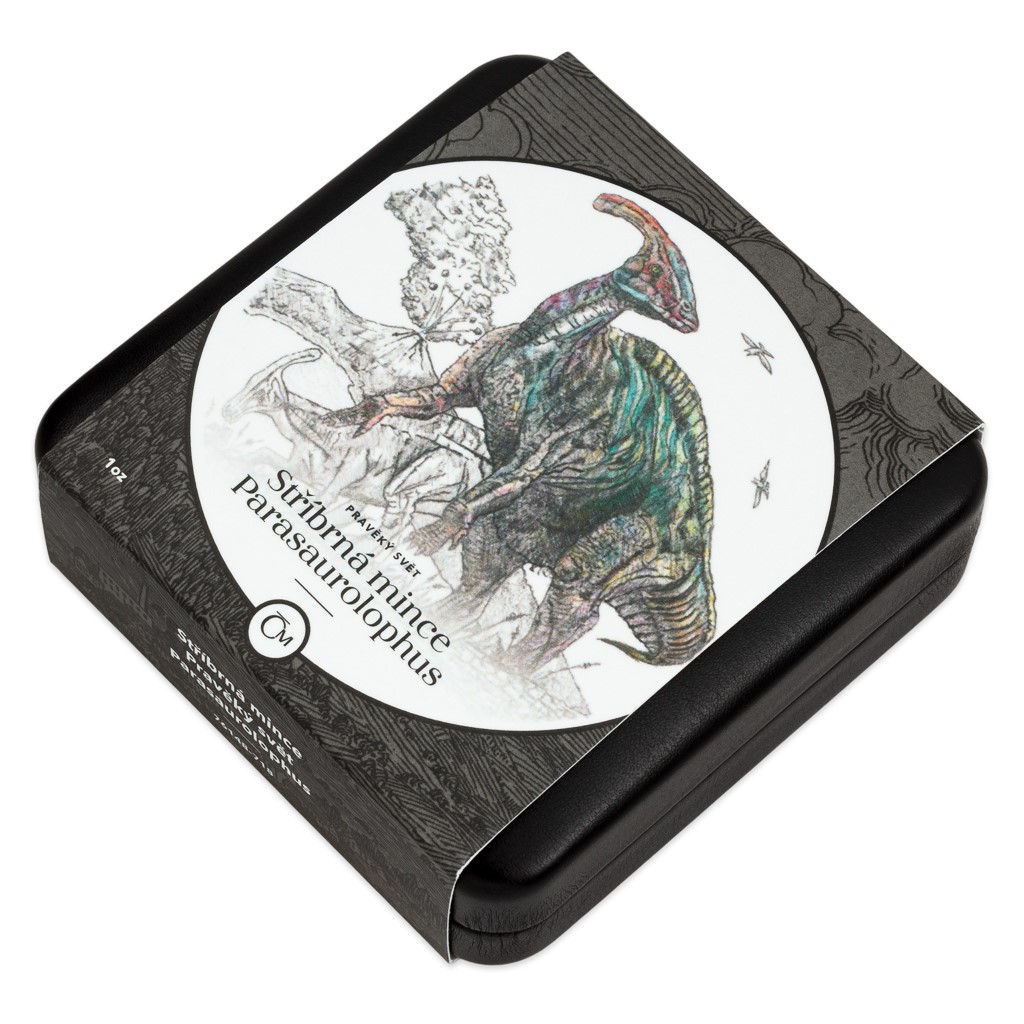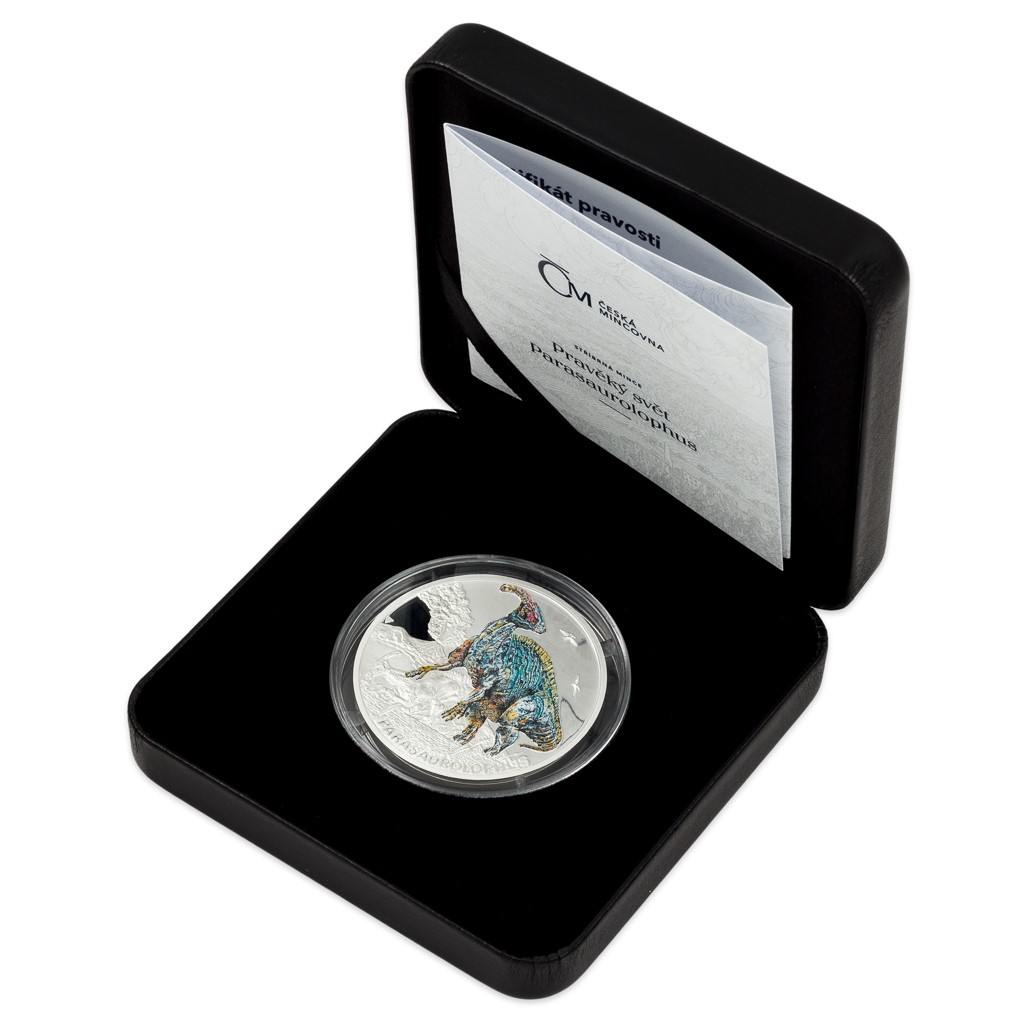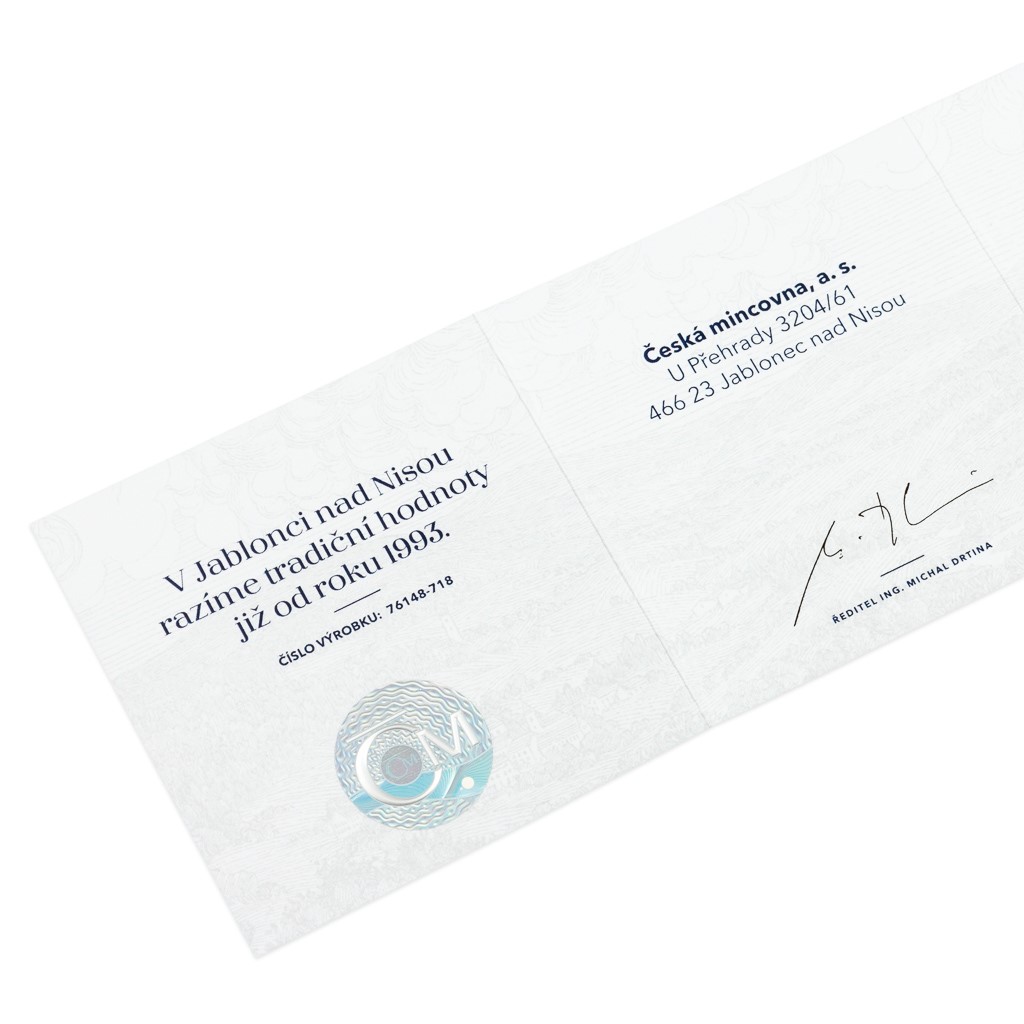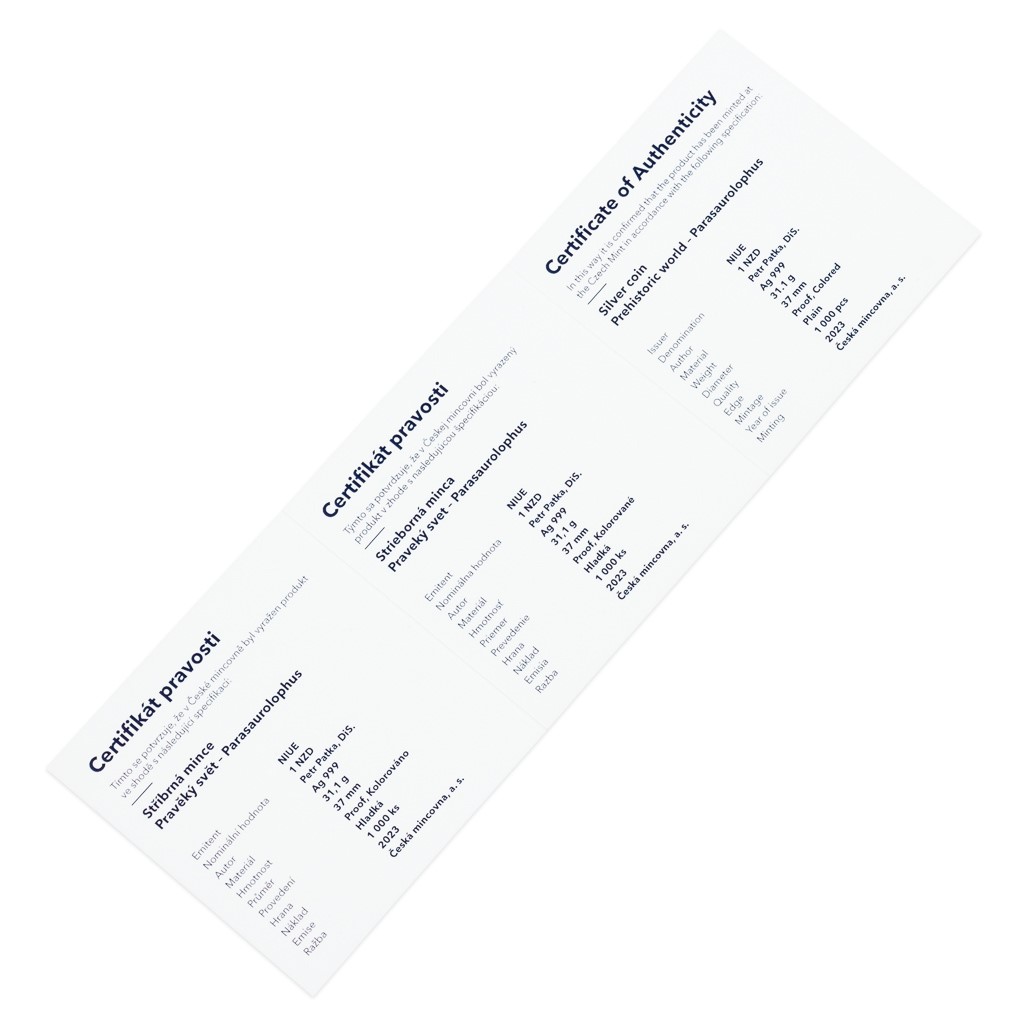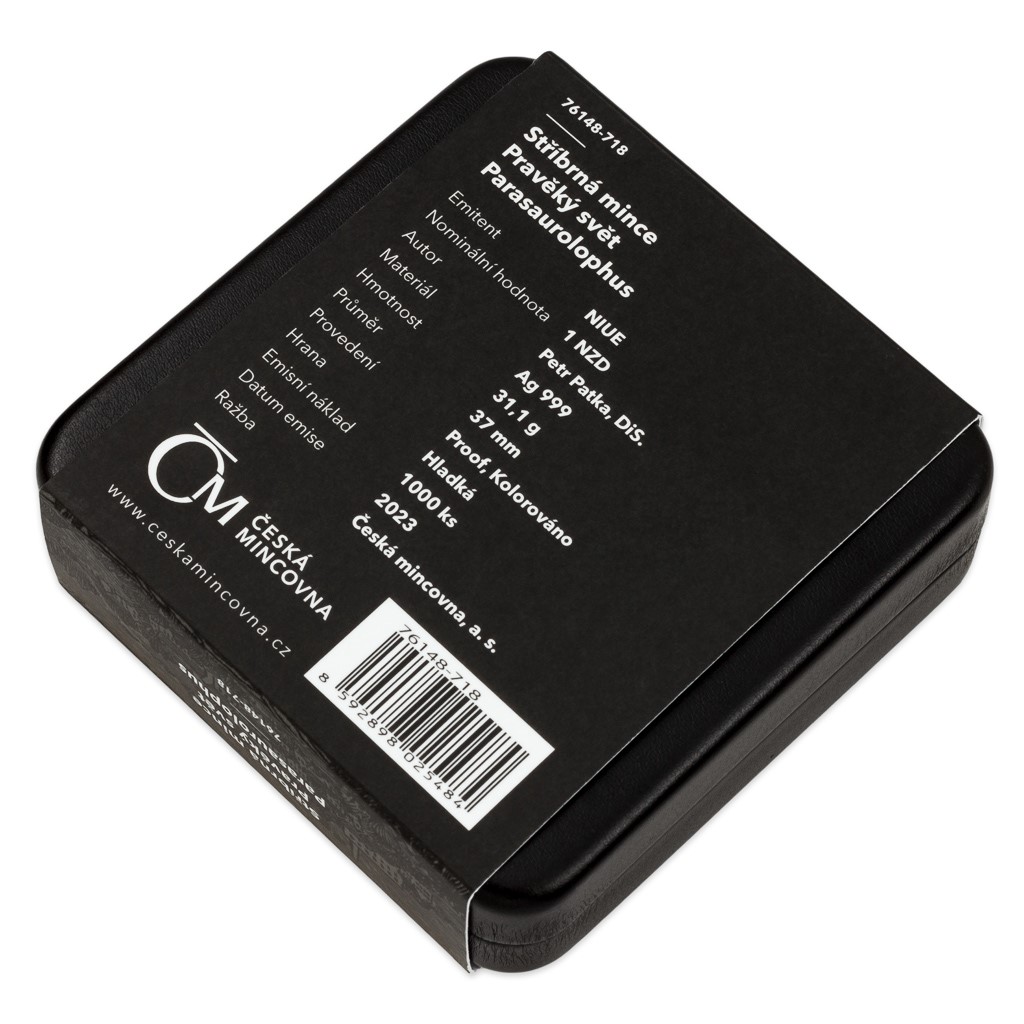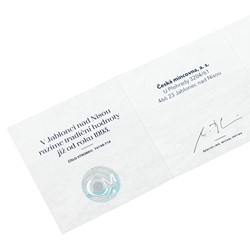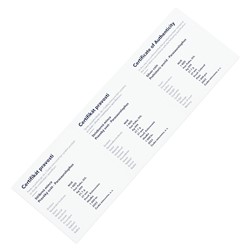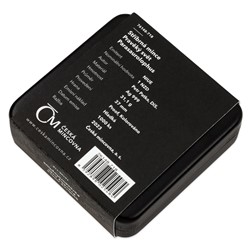Silver coin Prehistoric world - Parasaurolophus proof
Silver coin Prehistoric world - Parasaurolophus proof
The product can also be purchased directly in the stores of the Czech Mint
Prehistoric world
The fifth Mesozoic lizard to appear on the Czech Mint's silver coin from the Prehistoric World series is the Parasaurolophus.
Parasaurolophus, which was classified as a herbivorous duck-billed hadrosaur, boasted a distinctive bony crest on its head. This promontory, which could measure up to 180 centimetres in the case of a ten-metre-long dinosaur, was hollow and connected to the air passages. It enabled Parasaurolophus to make impressive sounds that resembled a drawn-out, resonant roar and allowed it to communicate with other dinosaurs over long distances. Probably, the bone tube also provided an exceptionally sensitive sense of smell and aided in thermoregulation. Females had a much shorter crest than males.
The reverse side of the coin was dedicated by the medal maker Petr Patka, DiS., to the depiction of a duck-billed parasaurolophus in vivid colours, which were achieved by means of colouring technology. No photographs or computer graphics were used as a template - the author of the coin created an original painting. The embossed relief shows a Mesozoic wilderness with another grazing parasaurolophus. The composition of the reverse side is supplemented with the inscription PARASAUROLOPHUS. The obverse side of the coin, which is common to the whole cycle, presents a fossilised skeleton of a tyrannosaurus, together with the English inscription PREHISTORIC WORLD. As the licence to issue the commemorative coins of the Czech Mint is granted by the Pacific island of Niue, the obverse side bears its necessary elements - the national emblem, the nominal value of 1 DOLLAR (NZD) and the year of issue 2023.
You can save the coin dedicated to the dinosaur in a collector's album, which is full of interesting facts about the life of giant lizards.
 čeština
čeština
 slovenčina
slovenčina
 english
english
